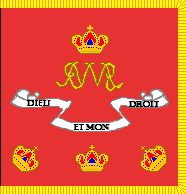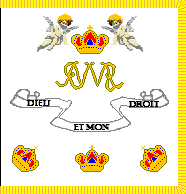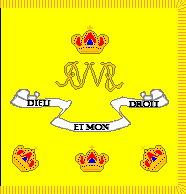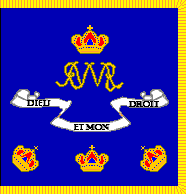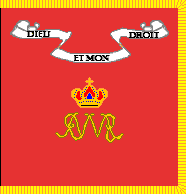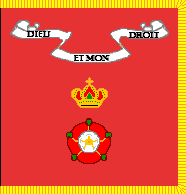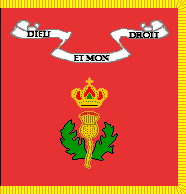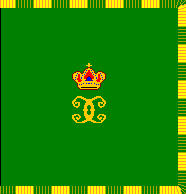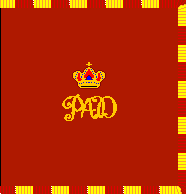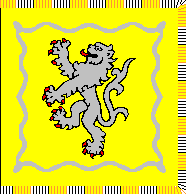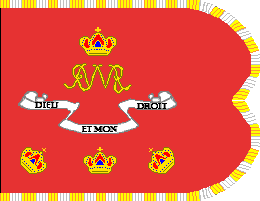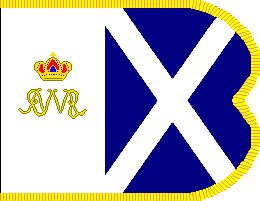In 1700 the
cavalry of the British Army consisted of regiments and troops of
horse and dragoons. The regiments of horse constituted the regular
line cavalry, while dragoons were still regarded as mounted
infantry. The army as a whole was divided into the English, Scottish
and Irish establishments; thus the 1st, 2nd and 3rd Troops of Horse Guards were on the English establishment, and the
4th Troop was on the Scottish establishment. Independent troops of
horse and dragoons still existed, but by 1700 the regimental
organization was more common. Most cavalry regiments consisted of
two troops, for a total strength of about 550 officers and men. The
demands of war and peace resulted in numerous raisings and disbandments of troops and regiments between 1688, when William III
came to the throne, and 1701, when the War of the Spanish Succession
broke out.
Cavalry
standards were of two types. Each troop of
horse carried a cornet, made of silk with silk fringe, three feet
square, with painted devices. Troops of dragoons carried a tailed
guidon, three feet on the hoist and five feet in length. The cornets and guidons depicted
below date from the mid-1690s, but those used during Queen Anne's reign
were similar. |
